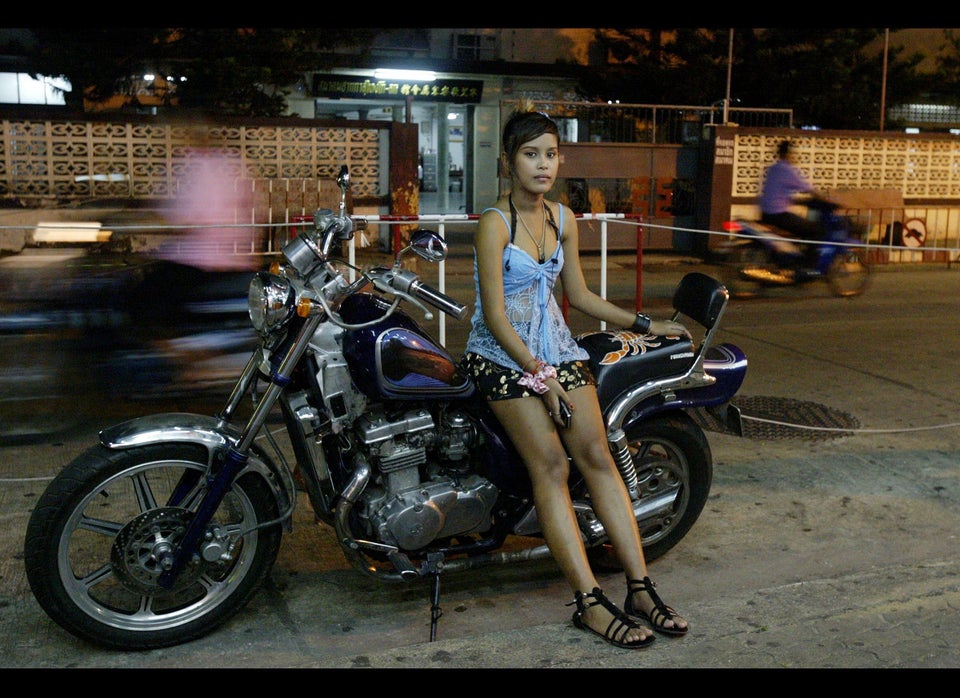In the fall of 2012, Deundrea Miller and Brittanie Brattain met a 15-year-old runaway near Fort Worth, Texas. They called her "Jewel." Online advertisements for "escort" services were posted on her behalf, and she met with strange men for "dates" while Miller and Brattain stayed close to collect the payment that changed hands. Finally, in January 2013, the girl escaped.
"Jewel" was a victim of child sex trafficking, or "modern-day slavery," as it's sometimes called by those who fight against it. Stories like hers are not as few and far between as we may prefer to believe -- as the FBI's annual crackdown last month showed, the exploitation of minors is a very real and perhaps growing issue in the U.S. Known as Operation Cross Country, the sting was carried out in 106 cities nationwide, freeing 168 minors from "the life" of prostitution and resulting in the arrest of 281 pimps. In the 11 years since the Innocence Lost National Initiative, which runs Operation Cross Country with FBI assistance, was launched, around 3,600 children have been rescued from sexually abusive situations.
Clearly, more needs to be done to protect children from exploitation. Here’s what you should know.
1. At least 100,000 children in the U.S. are sexually exploited each year, according to estimates.
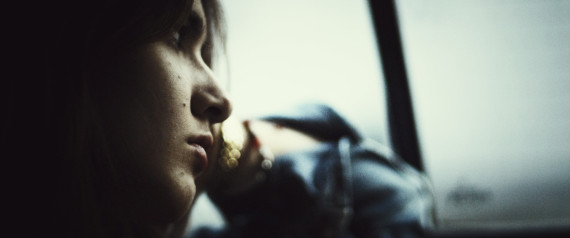
The Department of Justice and the National Center for Missing and Exploited Children, however, believe children like "Jewel" number somewhere around 105,000 in the U.S., with another 300,000 at risk of exploitation. Around 40 percent are U.S. citizens, while others are trafficked from other countries.
Of course, the exact number of victims can't be known. "If you understand the crime and the manipulation and control behind it, you'll understand why it is difficult to get victims to disclose their history of abuse," Staca Shehan, director of the Case Analysis Division at the National Center for Missing and Exploited Children, explained to The Huffington Post.
2. The legal definition of trafficking incorporates more cases of exploitation than you may think.
It’s important to remember that while the term "trafficked" implies movement, transportation of victims across state or national lines isn’t part of the federal definition of sex trafficking. Rather, anyone compelled to perform commercial sex acts by force, fraud or coercion is a sex trafficking victim. To further protect children, anyone under 18 years of age who performs commercial sex acts is considered a victim even if force, fraud or coercion isn't obviously a factor.
3. The FBI has called sex trafficking of adults and minors the fastest-growing global criminal activity and the third-largest behind drugs and weapons.
That's because there's a lot of money to be had in the industry. Jewel was sold for $160 per hour, according to the Fort Worth Star-Telegram. An oft-cited statistic claims that a pimp can make $150,000 to $200,000 on one victim over the course of a year by forcing her to turn over all her earnings. But you can do the math yourself. A victim made to bring back $500 every night, a standard quota, will earn $14,000 per month, or $168,000 per year.
The National Human Trafficking Resource Center, operated by anti-trafficking organization Polaris Project, operates a hotline dedicated to helping victims. In the period between 2008 and 2012, the center saw a 259 percent increase in calls and documented 9,298 potential cases of trafficking. Similarly, the FBI's pending human trafficking cases increased 175 percent between 2009 and 2012.
4. It’s not just girls who are trafficked.
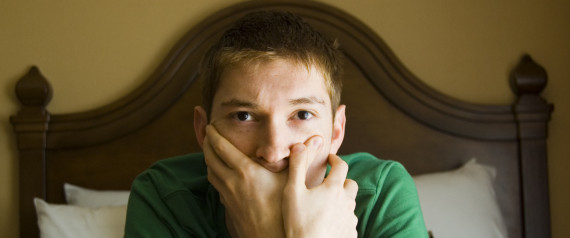
According to anti-trafficking organization ECPAT-USA, boys are a bigger part of the trade than we may think. Whereas girls typically begin "the life" at 12 to 14 years old, boys start a bit younger, at 11 to 13 years old.
A 2013 report by ECPAT-USA claimed many young male sex workers are runaways or "throwaways," often LGBT youths that have been thrown out of their homes because of their sexuality, leaving them on the streets and at high risk for exploitation. In 2008, about 50 percent of minors involved in the commercial sex trade in New York City were thought to be male, according to researchers at John Jay College. More research would be needed for nationwide estimates. Although not much is known about boys in the sex trade, ECPAT suggested they are more commonly recruited by their friends and peers than traditional pimps, but perhaps just as likely to experience violence associated with sex work.
5. It’s easy to exploit missing children because most states do not require parents, guardians or child welfare services to report them missing.
When minors disappear -- because they've run away from home, been kidnapped or any other reason -- they sometimes fall under the radar of law enforcement, frustrating officials. "No one is reporting them missing," John Ryan, CEO of the National Center for Missing and Exploited Children, said of many exploited children. "Hence, no one is looking for them."
These vulnerable missing children make easy targets for pimps. Malika Saada Saar, director of the Human Rights Project for Girls, told HuffPost that traffickers know to troll shelters, bus stops, malls and other similar locations for victims. And they know precisely how to identify them, too.
6. The foster care system has turned into a veritable pipeline for trafficking as kids desperately seek stability.
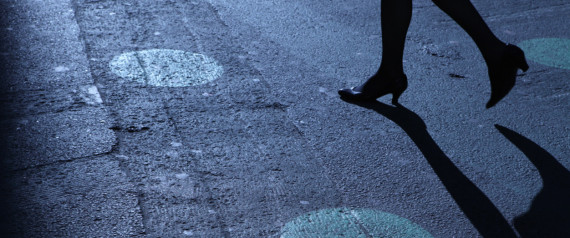
Figures for this year's Operation Cross Country sting have not yet been released, but in 2013, a majority had come from the foster care system, where they often faced abuse. And so they wanted to believe the older man who embodied a comforting position of power, promising financial support and an escape from an unhappy family life. Of course, it's almost always a cheap ruse, but exploited children sometimes do not see themselves as victims thanks to that false sense of safety and security -- or at least a feeling that they aren't as badly off as they could be.
"In most of my 14 different placements in foster care homes, I was raped and attached to a check," one victim told Saar. "I understood very early that I could be raped, cared for and connected to money. It was therefore easy to go from that to a pimp, and at least the pimp told me that he loved me."
Another former foster child, sharing her seven-year experience in sex trafficking with the House Ways and Means Committee in 2013, said the careless attitude of many foster parents "normalize[d] the perception that [the children’s] presence is to be used for financial gain."
7. Pimps are expert manipulators, sometimes spending weeks and months courting girls online or in person.
They'll reveal their true intentions, of course, only after the girls agree to leave their homes. In 2006, a 16-year-old runaway escaped an abusive boyfriend who forced her into prostitution and met Erik Shamsud-din at a California motel. She wanted protection. Shamsud-din invited her to work for him instead, luring her with the promise of a relationship. He taught her to advertise herself online, traveling with her across the country to meet with individuals who responded, but he soon started taking all the money she was paid. In 2007, Shamsud-din was arrested.
Love -- or the promise of it -- can be a convincing motivator. Tina Frundt, now director of the anti-trafficking organization Courtney’s House, fell into one such trap when she was 14. When a man 10 years her senior professed his love and invited Frundt to meet the rest of his "family" in Cleveland, she went with him, not knowing that by "family," he meant "three underage prostitutes."
"This is the same man that took me out to eat, listened to me when I wanted to complain about my parents, gave me words of advice," Frundt later wrote.
8. Traffickers often make victims stay in dangerous situations by another method of control: drugs.
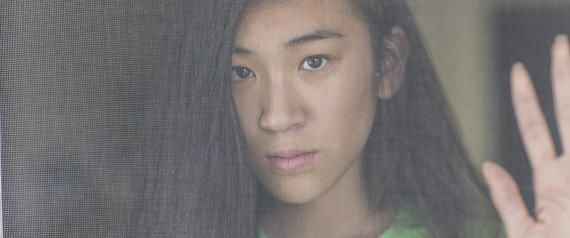
When fanciful promises of happily ever after fall away, victims can be made to stay through forced substance addictions, or else using the drugs to self-medicate, according to the World Health Organization. Some addictions can be held over a victim's head -- one insubordinate act and the drugs are easily withheld, sparking painful and debilitating withdrawal symptoms. One victim explained to Vanity Fair the feeling of a forced withdrawal from heroin. "You can’t move," she said. "You’re cramped. You shake. You don’t want to shower. You don’t want to be touched."
Promising a 15-year-old Seattle girl a house, car and family in 2008, James Jackson lured her to a hotel in Portland, where he beat her and later got her addicted to cocaine. The 16-year-old girl coerced by Shamsud-din later wound up addicted to crystal meth. In 2009, Jose Juarez-Santamaria helped coerce a 12-year-old runaway he'd met at a party into the sex trade, giving her alcohol and marijuana so she’d have sex multiple times a day with multiple men.
"Customers like it if you’re high," another victim explained to Saar, "because they can take advantage of you."
9. And many traffickers wield control over their victims with the simple yet powerful threat of violence.
Violence inflicted by adults can have a strong effect on a child. On her experience in Cleveland, Frundt explained how she came to realize she was in trouble. "I was seeing a side of [the pimp] that I never saw before," she wrote. "A brutal side, where he repeatedly hit me in front of the other girls to teach us all a lesson."
In 2012, a man nicknamed "Gruesome" was able to force two minors into prostitution in Detroit by making threats with a handgun, claiming he’d kill the girls and their families if they didn’t obey him. And truly earning his label as a modern-day slave driver, Terrence Yarbrough beat four young women (two minors and two adults) whom he'd forced into prostitution between 2006 and 2009 with belts and dog chains. He threw them down stairs, burned them with boiling water. Yarbrough is currently serving almost 45 years in prison.
10. Traffickers treat their victims like chattel, branding them or selling them off.
Along with scarring and burns, that's one of the signs authorities use to identify trafficking victims.
To assert his "ownership" of the girls, Yarbrough "branded" each of them by tattooing his nickname, "T-Rex," onto their arms. At any point, however, a pimp can choose to sell their victims to another pimp. One girl told Vanity Fair that she was sold, at age 14, from one man called "Love" to another called "Junior" for $600.
11. Traffickers are using the Internet to sell sex with children, and there's still debate over whether these websites should be shut down.
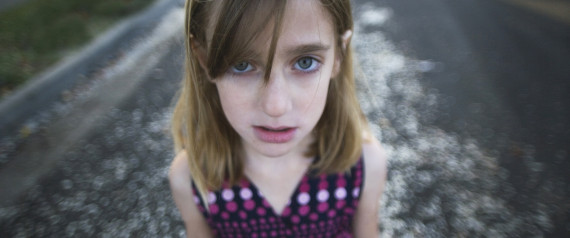
While Craigslist shut down its adult services section in 2010, ads for "massages" and "casual encounters" can still be found there. (Not all are code for prostitution, but some are.) Other sites, such as Eros, Rentboy and Backpage have more explicit listings for male and female escorts.
Yes, some such ads are posted by consenting adults -- not pimps, or young victims under a pimp’s direction. Backpage, however, has been under particular scrutiny for its role in many cases of child sex trafficking. In 2011, the attorneys general from 48 states signed a letter urging the site to shut down its adult services section.
In a defense of Backpage, a representative for the site's owners, called it an "ally" in the fight against exploitation. "To stop human trafficking online, you have to fight it online," she wrote in The Seattle Times, arguing that eliminating the site's "adult" categories would drive trafficking further underground, and that the site readily responds to information requests by law enforcement within 24 hours. Still, many feel a need for more stringent regulations.
12. Many traffickers were likely abused and mistreated in their own childhoods.
The power of running a "business" is, for many involved, an attempt to turn the tables of their own unfortunate life situations. Of the 25 former pimps interviewed by a team of DePaul University researchers, 88 percent of them said they'd suffered physical abuse growing up, and 76 percent said they'd experienced sexual assault as children. Nearly half ran away from home at some point, suggesting efforts to curb domestic abuse may very well have a positive halo effect on the trafficking industry.
"All my life I was pushed around, beat up and treated like shit," one former pimp told the researchers. "But when I got these ladies who let me control and run their lives and give me money … I had all the cards in my hand. Every man wishes they were me."
13. But under most current state laws, children forced into prostitution are the ones subject to criminal prosecution.

According to federal law, anyone under 18 caught in the commercial sex trade is considered a victim of trafficking. Local laws vary widely, however. Most states criminalize child sex workers, meaning that a minor attempting to solicit sex on behalf of a pimp may be formally arrested for child prostitution, despite being under the legal age of consensual sex.
Children also end up detained or arrested by law enforcement for simply trying to escape an abusive living arrangement. Law enforcement may charge a minor with a status offense for running away or ignoring curfew, instead of taking action against the circumstances which influenced the child's actions in the first place . This helps create a cycle that puts children at risk of exploitation. And as Rep. Ted Poe (R-Texas) pointed out, there are more animal shelters (about 5,000) in the U.S. than there are beds for exploited children (about 226).
14. The "johns," or customers, sometimes walk away scot-free.
"It's remarkable to me," Saar told HuffPost, "that the buyers who commit child rape are not accountable for that crime." The FBI hasn't published the number of johns arrested as part of any of its Cross Country operations, for example. When NPR justice correspondent Carrie Johnson inquired about the issue, she was told the FBI didn't keep track of those numbers.
If the language of sex trafficking were redefined as a crime against women and girls, Saar suggested, public opinion might change. "If [child rape] happened in the classroom, with an uncle, someone's 14-year-old daughter," she said, "in those situations, an adult would be arrested for statutory rape. They would be placed on a sex offender registry. And yet none of that plays out in the situation where these girls are trafficked."
15. New legislation, however, may help change all of that.
There is some hope in the enactment of "Safe Harbor" laws by individual states. The Polaris Project defines "complete" Safe Harbor laws, which have been passed in 12 states, as those that both protect minors from prostitution charges and offer rehabilitation services.
A federal bill to require guardians and child welfare services to report missing children within 24 hours passed a vote in the U.S. House of Representatives back in May, and goes next to the Senate for consideration. Another federal bill, the Justice for Victims of Trafficking Act, aims to reduce the demand for child sex trafficking by encouraging law enforcement to prosecute the customers themselves. This bill is also poised for Senate consideration.



